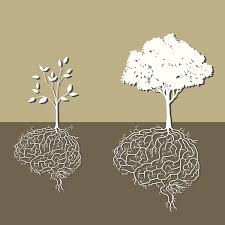 Research Findings presented at the Experimental Biology Conference, 2017, as well as dozens of leading experts in the field (See Bibliography) show how walking can benefit the brain, and confirm that a sedentary lifestyle is a significant risk factor not only for heart disease but also for cancer, diabetes, and neurodegenerative illness. The problems may be the result of inflammation, toxicity or genetically induced celluar abnormalities. Circuits may die, become dormant or begin firing at irregular rates. Dr Norman Doidge, Author of “The Brain’s Way of Healing” calls this a ‘noisy brain’ and prescribes walking as the panacea. Neurocientist Dr, Shane O’Mara, author of “In Praise of Walking” (2020) states bluntly that “we cannot be sedentary and well”.
Research Findings presented at the Experimental Biology Conference, 2017, as well as dozens of leading experts in the field (See Bibliography) show how walking can benefit the brain, and confirm that a sedentary lifestyle is a significant risk factor not only for heart disease but also for cancer, diabetes, and neurodegenerative illness. The problems may be the result of inflammation, toxicity or genetically induced celluar abnormalities. Circuits may die, become dormant or begin firing at irregular rates. Dr Norman Doidge, Author of “The Brain’s Way of Healing” calls this a ‘noisy brain’ and prescribes walking as the panacea. Neurocientist Dr, Shane O’Mara, author of “In Praise of Walking” (2020) states bluntly that “we cannot be sedentary and well”.
Footfalls Increase Blood Flow to the Brain
In scientists found that the foot-to-ground impacts created during a walk sends pressure waves surging through the arteries, and ultimately increase the amount of blood sent to the brain. Termed “vascular endothelial growth factor” (VEGF), this process helps to grow the network of blood vessels carrying oxygen and nutrients to brain cells. Brain health and blood flow can be decreased by the inflammation associated with obesity, by hypertension, by glucose intolerance and more. The brain “breathes” through blood, and increased blood means more oxygen in the vessels, which prevents cell death, improves cognitive functioning, and keeps conditions like dementia at bay.
Increases Cognitive Function and Brain size
Exercise increases levels of a critical protein in the brain called brain-derived neurotrophic factor (BDNFs) which play a big role in the development of within-cell communications in the brain. In Adults who did regular walking for a year, the hippocampus actually got bigger, and neurotrophins; these are proteins important for the growth, health and survival of certain brain cells, proliferated.
Green Prescription: A Dose of Medicine
The rush of ‘feel good’ chemicals.…the hormonal cocktail of dopamine, serotonin and norepinephrine produced by walking (especially in nature) is like a calming, energizing pick-me-up shot that can power you through the remainder of your day. A walking routine is a great morale booster—the sense of pride in conquering a goal releases success-based endorphins and inspires momentum for days.
Born to Move
O’Mara states that humans have a “motor-centric” brain – it evolved to support movement and, therefore, it won’t work as well when we are sedentary. Movement sharpens our senses and dormant brain rhythms come to life. Engaging in systematic dual tasking, such as talking and walking produces the theta frequency necessary for healing, learning and growth. Theta is the frequency of integration, and there is an optimizing frequency between the brain and ambulating.
